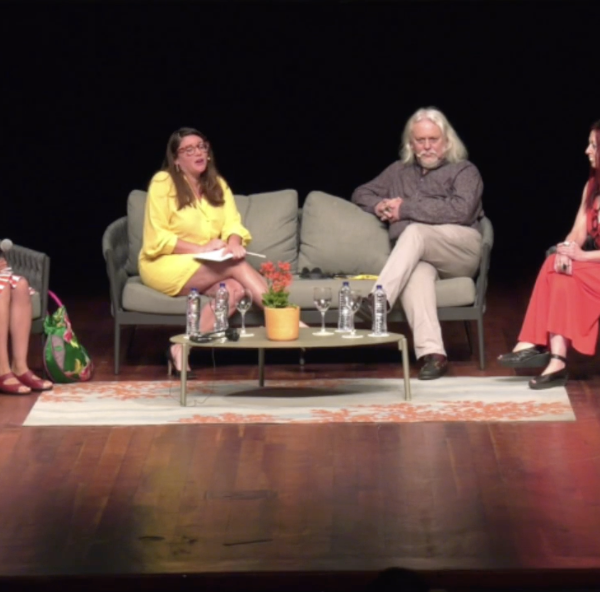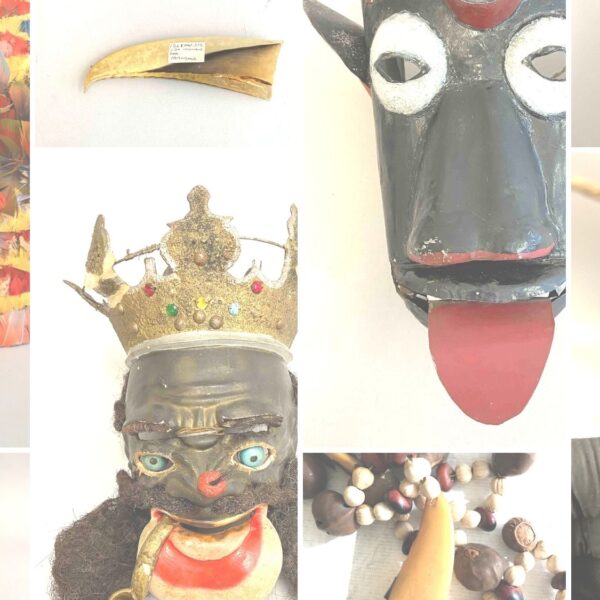Blog ‘Mapping a New Museum’ – A book to rethink the role of the museum
Presenting a selection of innovative projects that have taken place in Latin America over the last year, Mapping a New Museum begins to map out possibilities for the future of the global museum.
The projects featured within the pages of this book were all supported by The Santo Domingo Centre of Excellence for Latin American Research (SDCELAR) at the British Museum (BM), with the aim of making the BM’s Latin American collections meaningful to communities in the region and others worldwide.
These projects illustrate how communities manage cultural heritage and, taken together, they suggest that there is also no all-encompassing counter-narrative that can be used to “decolonise” museums. Reflecting on, and experimenting with, the ways that research happens within museum collections, the interdisciplinary collaborations described within these pages have used collections to tell stories that destabilise societal assumptions, whilst also proactively seeking out that which has historically been overlooked.
The result is, the book argues, a research environment that challenges intellectual orthodoxy and values critical and alternative forms of knowledge. Mapping a New Museum contains English and Spanish versions of every chapter, which enables the book to put critical stress on the self-referentiality of Anglophone literature in the field of museum anthropology.
Laura Osorio Sunnucks, head of SDCELAR says:
Mapping a New Museum showcases some of the diverse research carried out with or funded by the Santo Domingo Centre. Some of the research described in the book is about the British Museum’s Latin American collections, while the rest deals with contemporary creative and historical interests in the region. Importantly, most of the contributors in the volume take committed political positions about their research context.
This book seeks to be a sketch for how we might disentangle the colonial relationships that continue to be reinforced by collection research in museums like the British Museum. The contributions show tensions in that effort, as well as the importance of locally specific frameworks and sensibilities. In line with our hope that Centre’s activities are primarily relevant in Latin America, the book is in Spanish as well as English.
You can find the book at this link and read an excerpt here:
Content
Jago Cooper & Laura Osorio Sunnucks
Laura Osorio Sunnucks
1. Paths to the Past through Oca’õ, Agõkabuk and Munduruku Material Culture – Pasos al pasado a través de Oca’õ, Agõkabuk y el material cultural Munduruku
Jair Boro Munduruku
2. Under the shelter: Archaeology in the Caves of Rurópolis, Amazonia, Brazil – Bajo el refugio: arqueología en las cuevas de Rurópolis, Amazonía, Brasil
Vinicius Honorato
3. Colombian Amazon: the Millenary History of Serranía la Lindosa painted on its walls – Amazonia colombiana: la historia milenaria de la Serranía La Lindosa dibujada en sus paredes
Francisco Aceituno, Gaspar Morcote-Ríos, José Iriarte & Mark Robinson
4. Assessing Holocene Coastal Environmental Dynamics in North Western Guyana – Evaluando las dinámicas ambientales de la costa del noroeste de Guyana en el Holoceno
Louisa Daggers
5. A Review of Guyana’s Amerindian Heritage Month on its Twenty-Fifth Anniversary – Una revisión del Mes del Patrimonio Amerindio de Guyana en su vigésimo quinto aniversario
Romona Bennett
6. Afro-Peruvian Zapateo: Ritual, Challenge and Language – Zapateo afroperuano: ritual, desafío y lenguaje
Juan Felipe Miranda Medina & Walter Manrique Cervantes
7. Tomorrow: Presidential Message – Mañana: Mensaje presidencial
Nereida Apaza Mamani
8. Invisible Homeland, an Artist Residency at the British Museum – Pátria invisible, una residencia artística en el Museo Británico
Nereida Apaza Mamani, Laura Osorio Sunnucks & María de las Mercedes Martínez Milantchí
9. Journal of Travel and Tours at the British Museum – Un diario de viajes y recorridos dentro del Museo Británico
Nicolas Grum
10. London “A-Z” – Londres “A-Z”
Nereida Apaza Mamani
11. Huwe Moshi (Coral Snake) – Huwe Moshi (Serpiente Coral)
Sheroanawe Hakiihiwe
12. Untitled – Sin título
Feliciano Lana
13. Digital Repatriation of Biocultural Collections: Connecting Scientific and Indigenous Communities of Knowledge in Amazonia – Repatriación digital de colecciones bioculturales: conectando comunidades científicas e indígenas de conocimiento en la Amazonía
Luciana Martins
14. Genocide Collections at the British Museum: House of Shadows, Basket of Seeds – Colecciones del genocidio en el Museo Británico: casa de sombras, cesto de semillas
Oscar Román-Jitdutjaaño, Alicia Sánchez, Juan Alvaro Echeverri, Ana Maytik Avirama, Laura Osorio Sunnucks, María de las Mercedes Martínez Milantchí & Maria Fernanda Esteban Palma
15. Decolonising the Representation of the Camënsta People at the Museum. Developments in the Bëngbe Benacheng project – Descolonizando la representación del pueblo Camëntsá en el museo. Avances del Proyecto Bëngbe Benacheng
Marcelo Marques Miranda & Jully Acuña Suárez, con el Colectivo Ayentš
16. Unfolding Maya Blue – Descubriendo el Azul Maya
Lorena Ancona
17. Technological Continuity & Innovation through the Archaeology of Mona Island, Puerto Rico – Continuidad tecnológica e innovación a través de la arqueología en la isla de Mona, Puerto Rico
María de las Mercedes Martínez Milantchí
18. Sovereign Practices of a Women’s Agriculture in San Basilio de Palenque, Colombia: “Peanuts taste like heaven to me” – Prácticas soberanas de la agricultura femenina en San Basilio de Palenque, Colombia: “El maní me sabe a cielo”
Amber Henry & Basilia Pérez Márquez
19. Shitikari (Skyscape) – Shitikari (Cielo de estrellas)
Sheroanawe Hakihiiwe
Chris Gosden
STAY UPDATED >> Find our latest projects on Facebook and Instagram.


